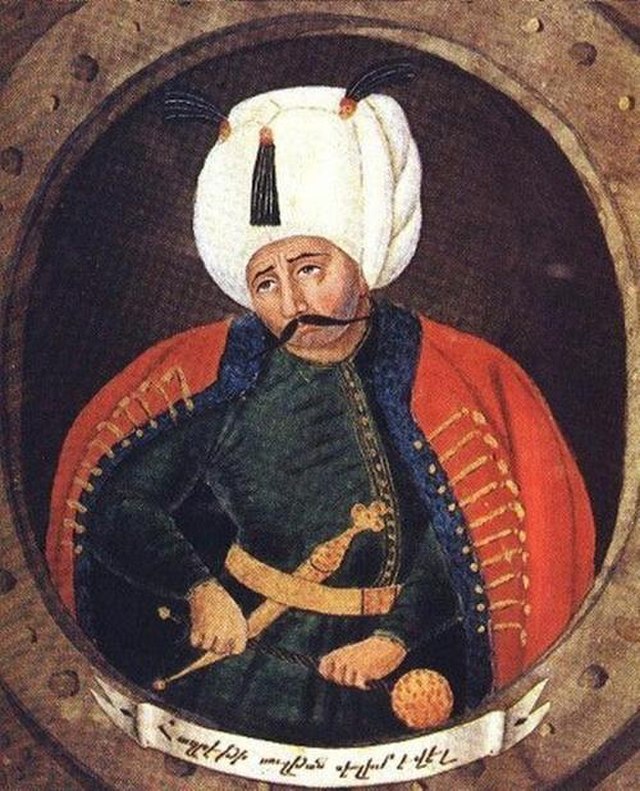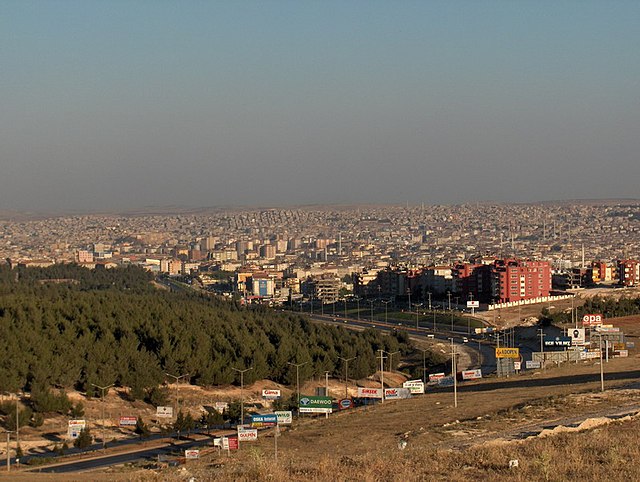
Gaziantep city-by see above-Wikimedia Commons
Top 10 Remarkable Facts about Gaziantep, Turkey
Gaziantep is the capital of the Gaziantep province, located in western Turkey, and is still known colloquially as Aintab or Antep.
It is in the southeastern Anatolian region and partly in the Mediterranean region, approximately 185km east of Adana and 97km north of Aleppo, Syria. The city is located near the ancient Zeugma.
It is the possible site of the Hellenistic city of Antiochia and Taurum, with its fortress standing in the center of the city which was restored by the Byzantines in the 6th century.
As of the last estimation in 2021, the metropolitan province was home to 2,130,432 inhabitants, of whom 1,775,904 lived in the metro area made of two urban districts of Sahinbey and Sehitkamil.
It is the 6th most populous city in Turkey. Here are 10 remarkable facts about Gaziantep.
1. The city’s name has many variants and alternatives
The name of the city has many variants and alternatives due to its contact with many ethnic groups and cultures throughout its history such as; Hatab as known by the Crusaders.
Antab in Turkish and Armenian since the 17th century at the latest. Aīntāb in Ottoman Turkish, Gaziantep in official Turkish, and Aïntab or Verdun turc in French.
The several theories for the origin of the current name include; Aïntap means “king’s land” in the Hittite language, and Aïn, an Arabic and Aramaic word meaning “spring”.
Also, tab as a word of praise, Ayin dab or Ayin Debo in Aramaic, meaning “spring of the wolf”, and Antep meaning “good spring”.
2. The city was ruled by various civilizations
The city passed to Umayyads in 661AD and the Abbasids in 750AD, following the Muslim conquest of the Levant.
It was then ruled by the Tulunids, the Ikhshidids, and the Hamdanids after severally being ravaged during the Arab-Byzantine wars.
Anatolian Seljuks took over in 1067 and gave way to the Syrian Seljuks in 1086. The Crusades took over in 1098 and in 1150, it retreated to the Seljuk Sultanate of Rum where it was controlled by the Armenian kingdom of Cicilia between 1155-1157 and 1204-1206.
Zengids took control in 1172 followed by Ayyubids in 1181 then the Ikhanate between 160-1261,1271-1272,1280-1281 and 1299-1317.
The Mamluks ruled between 1261 and 1299,1317-1341,1353-1378,1381-1389and 1395-1516.
The Ottoman Empire took over in 1516 and after the First World War, the United Kingdom came into control in 1918.
3. Gaziantep experienced a rise in wealth within a short period
Gaziantep was ruled by the Armenian Kingdom of Cicilia for a short period of the last two millennia.
It hosted a large community of Armenian communities that played a major role in its growth. They were active in manufacturing, agriculture production, and most notably, trade.
They became the wealthiest ethnic group in the city until their wealth was confiscated during the Armenian genocide.
4. Gaziantep was ruled by one of the most successful rulers of the Ottoman Empire

Selim-i-by Word press-Wikimedia Commons
The Ottoman Empire captured Gaziantep in 1516 under the reign of Sultan Selim I after the Battle of Marj Dabiq.
During this period, Aintab was a Sanjak in the Dulkadir Eyalet(1516-1818)and later in the Aleppo Vilayet(1908-1918).
The city established itself as a center for commerce due to its location roosting trade routes which led to the growth of the population.
5. It is an important agricultural and industrial center of Turkey
The number of large industrial businesses established in this city comprises 4% of Turkish industry in general, while small industries comprise 6%.
It has the largest organized industrial area in Turkey and holds the first position in exports and imports.
Also, Gaziantep has a developing tourist industry starting from the castle to new restaurants and business-friendly businesses moving into the area.
The city is one of the leading producers of machined carpets in the world and has extensive olive groves, vineyards, and pistachio orchards.
6. The city consists of several historical attractions

Gaziantep Gaziantep War Museum 1779-by Dosseman-Wikimedia Commons
The Gaziantep Museum of Archaeology has collections of ceramic pictures from the Neolithic age. The Zeugma Mosaic Museum houses mosaics from Zeugma and other places.
Yesemek Quarry and Sculpture Workshop is an open-air Museum, the Gaziantep Defence Museum, Gaziantep Mevlevi Lodge Foundation Museum, and Emine Gogus Cuisine Museum known for its cuisine and food culture.
Some of its historical places include; Zeugma, Gaziantep castle, Liberation Mosque, Boyaci Mosque, Sirvani Mosque Omeriye Mosque, and Seyh Fethullah Mosque among others.
The city also consists of a zoo, Gaziantep Zoo one of the largest in Turkey, historical Bazaars, and historical Inns.
7. The city is easily accessible from major cities in Turkey

View from Gaziantep Castle-by Natalie Sayin-Wikimedia Commons
Gaziantep is one of the largest cities in southeast Anatolia and so many buses from all over Turkey stop at the city.
It is also well-connected with daily flights to major cities in Turkey, allowing to reach different destinations easily.
It is 15 km from the city center. Gaziantep’s tram runs on 2 routes, and 1 route is under construction. It has many modern specifications like any modern tram network.
8. Food in Gaziantep is different from other parts of Turkey

Juicy meatballs (with bulgur)-by E4024-Wikimedia Commons
This is because of the influence of the culinary traditions of nearby Aleppo which was an important regional administrative center of the Seljuk and Ottoman Empires.
The difference is noticeable in its rice dishes, soups, kebabs, and kofte(meatballs)among other dishes.
The meatballs come in varieties of Cig Kofte, Icli Kofte, meatball with Malhita(lentils), sour small meatballs, and small meatballs with yogurt.
The city’s food is known for being spicy compared to other Turkish cuisines.
9. Gazianteps most spoken language is Turkish
Although the city had the Armenian community as the largest ethnic group of the city in the past, ethnic Turks became the overwhelming majority in the city.
This was after the Armenians were systematically slaughtered during the Hamidian massacres and Armenian genocide in 1915.
The majority of the Turkish population comes from tribal origins that became urbanized in the last Millenium.
10. Gaziantep is a path of escape for refugees looking for shelter
Gaziantep has the first International School for refugee and forgotten children in the world.
Thousands of people have fled from war in Syria and have found asylum in Gaziantep, a city near the Syrian-Turkish border.
The school provides all children with the same opportunities to grow up free and independent.
Gaziantep is a UNESCO Creative Gastronomy City known for its long gastronomic history which has been at the core of its cultural identity since the Iron Age.
Planning a trip to Paris ? Get ready !
These are Amazon’s best-selling travel products that you may need for coming to Paris.
Bookstore
- The best travel book : Rick Steves – Paris 2023 – Learn more here
- Fodor’s Paris 2024 – Learn more here
Travel Gear
- Venture Pal Lightweight Backpack – Learn more here
- Samsonite Winfield 2 28″ Luggage – Learn more here
- Swig Savvy’s Stainless Steel Insulated Water Bottle – Learn more here
Check Amazon’s best-seller list for the most popular travel accessories. We sometimes read this list just to find out what new travel products people are buying.










